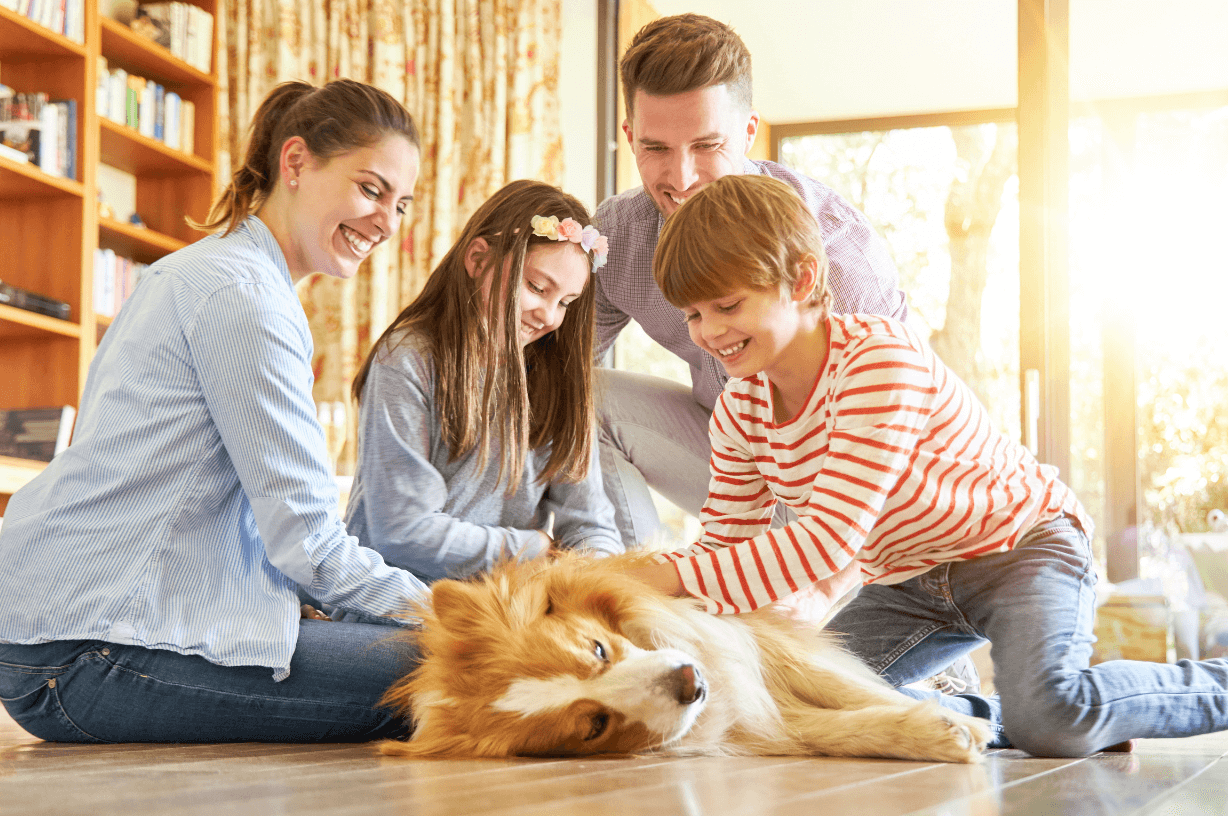Are you thinking about getting a dog? Dogs are devoted companions, big on unconditional love and a huge source of comfort to many people – and, scientifically speaking, they’re also good for your health.
But picking the right dog breed for your family isn’t something you should leave to chance. Regardless of where you choose to look for a dog, every breed has unique characteristics that may or may not be a good fit for your home.
Since the decisions you make today will have long-lasting consequences for you and your furry friend, it’s important to take a realistic look at your needs, expectations and wants before you commit. Here’s where to start:
First, Assess Your Lifestyle
Before you can begin to pick the right dog, you need to take a careful look at your family’s lifestyle. Consider things like:
- Activity Level: Are you a family that’s wildly “outdoorsy” and active? That high energy goes well with a golden retriever or a Dalmatian. If you prefer a more relaxed, indoor lifestyle, you want a dog that knows how to chill, like a King Charles Spaniel or a Bull Mastiff.
- Living Situation: Do you live in an apartment or a house with a yard? Some breeds simply take up a lot more space than others. You don’t want to have to wrestle a Great Dane in and out of an elevator every time the dog needs to go out, but a pug or a Boston Terrier are well-suited to apartment life.
- Time Availability: Some dog breeds require a lot more attention than others. Shih Tzu or Havanese are tiny dogs, but they are known to have an outsize need for affection to stay happy. Their grooming, too, can be extensive. If you need a low-maintenance dog, a Chihuahua or French Bulldog might be a better choice.
- Patience: Puppies are a lot of work. If you’re not up to managing midnight bathroom trips, potty accidents and chewed-up remotes during their teething phase, it may be better to adopt a grown dog who is already housebroken and past the teething stage.
Don’t forget to factor in anything else that might be important when selecting your dog, including whether you have children or other pets to think about. Labrador retrievers and Newfoundlands make great dogs for families with kids, but Akitas and Dalmations are not the best dogs to have around rambunctious or rowdy children.
Next, Look at the Characteristics of Individual Dog Breeds
Once you’ve taken stock of your lifestyle, you can start to narrow down the breeds that make the best fit. It’s important to remember that all the breeds that are out there were engineered by humans for different reasons. That selection process has left some dogs with basic personality traits that you might find endearing – or frustrating.
For example, working breeds, like a Blue Heeler or a Border Collie, are super intelligent and trainable enough to go anywhere with you – but they can get easily bored if they don’t have a job to do. They can also be bossy with small children and may attempt to “herd” them. English Mastiffs are gentle giants who are great with kids, but they have zero interest in following instructions and you need a high tolerance for drool to live with one. Ditto for Basset Hounds and Bloodhounds.
Siberian Huskies love to howl – which can be cute in a pup but difficult to deal with when your neighbors complain every day about the noise from a full-grown dog. Chihuahuas are small, clever and easy to groom, but they’re very vocal and can be a little feisty and territorial around small children, their toys, food and treats.
This is where you essentially have to start looking carefully at the pros and cons of each breed you’re considering and how they fit with the lifestyle notes you’ve already made for your family.
Finally, Decide Where to Launch Your Search
Once you’ve made some decisions about the dog breed(s) you think are the right size, activity level and personality type for your needs, it’s time to start your actual search. Your basic options are detailed below.
Local Shelters
These are great places to find a family dog, and you may like the idea of giving an abandoned dog a forever home. However, shelters usually have mixed breeds, and they may not know any given dog’s history, including whether there have been behavior problems.
Somewhere between 7% and 20% of shelter dog adoptees end up being returned to their shelters within the first six months because the new owners simply aren’t prepared for the problems they may have. If you go this route, be very clear with the shelter’s staff about what you can and cannot handle, and don’t let your heart overrule your head.
Rescue Groups
Did you decide that a grown dog would be better than a puppy? Lots of pure breeds have their own dedicated rescue groups. Since these dogs typically live with foster families while they seek their forever homes, you can usually get a good picture of any given dog’s personality and quirks.
Another perk of choosing to adopt a rescue is that the dogs are usually housebroken and at least partially trained. Many end up in rescues because their former owners died, went into nursing care or had an abrupt change in their living circumstances that wouldn’t accommodate their pets.
Breeders
If you want to raise a puppy with your family, this is probably the way to go – especially if you’re searching for a specific breed. The benefit of going to a reputable breeder is that you can pretty much see exactly what you’re going to get – in advance. You get a chance to check out the environment in which the puppy was born, meet their parents and learn about their lineage and any potential health issues.
Choosing the right breed – and the right dog or puppy – can be a long, involved process. Don’t rush it. It’s tempting to fall in love with the first pooch you see, but this is a decision that will stick with you for a decade (or significantly longer), so do your research before you get emotionally invested.
amanda.phillips@talktotucker.combill.ingram@talktotucker.combrad.layton@talktotucker.comeditors-pickerina.pribyshchuk@talktotucker.comfeaturedlloyd.zimmerman@talktotucker.commark.callahan@talktotucker.commary.layton@talktotucker.compriscila.hale@talktotucker.comterri.mcgraw@talktotucker.com




